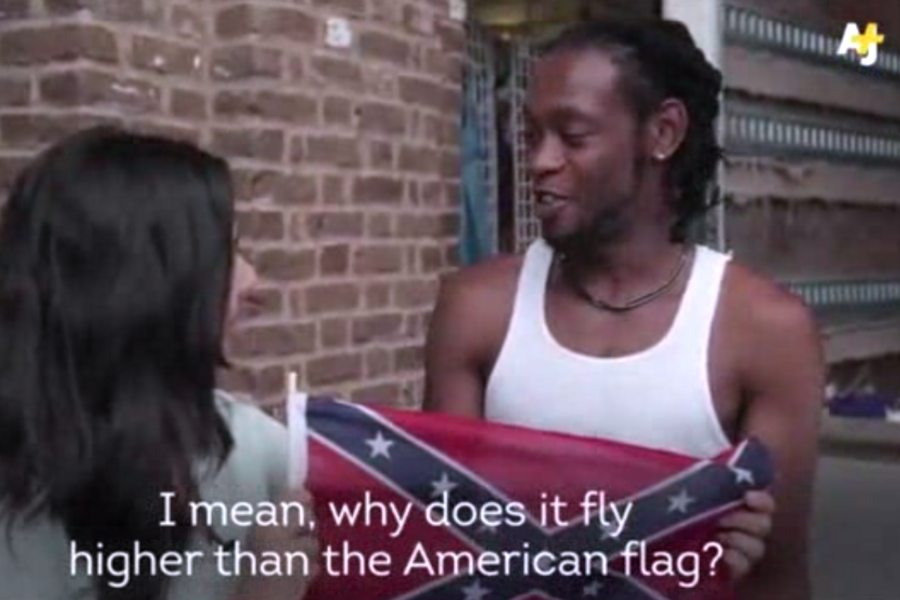Civil War buffs on Confederate flag debate: It's complicated
Loading...
| Bensenville, Illinois
If you're looking for simple answers about the Confederate flag's place in contemporary America, don't ask a Civil War reenactor.
"Long story short, it's complicated," said Mark Edmondson, who played a Union infantryman at a reenactment event in suburban Chicago over the weekend.
"The Confederate battle flag is a necessary part of history and its ... important to clarify history and not fall into some politically correct retelling," said the 36-year-old engineer, clad in a Union blue soldier's uniform.
Questions about the flag invariably produce long and nuanced answers from men and women who spend days each year in mock camps and battlefields recreating American history. For one thing, they don't like to talk about "the flag" but rather about "the flags."
Reenactors are quick to note that the rectangular "rebel flag," embraced by hate groups and displayed by Dylann Roof, the man accused in the South Carolina church shootings, in pictures he posted on the Internet, was not one of the Confederacy's three official flags, but instead a Confederate navy banner and the flag of the army of Tennessee.
Many Southern soldiers did carry square Confederate battle flags like the one flying in front of South Carolina's state house, but very few of those soldiers were slave owners and for many of them, the battle was more about other issues, including states' rights, Edmondson and other reenactors noted.
"That flag probably shouldn't be flying at the capitol ... but it's got a place in history. Our role as reenactors is to teach history, not to present some watered-down misinterpretation of events," said 22-year-old reenactor Grant Kohler, who dressed as a Louisiana soldier of the era, fighting on the Confederate side.
Edmondson, Kohler and some 50 other reenactors gathered at Fischer Farm in Bensenville, Illinois on Saturday, for a weekend of 1860s role playing that included no-frills tent camping, marching drills and a mock musket and cannon battle.
One of hundreds of Civil War reenactments that take place every summer across the country - and one of the first since the South Carolina church shooting - the Bensenville event comes a week before the 152nd anniversary of the Battle of Gettysburg, which is expected to draw hundreds of gray- and blue-uniformed history buffs to the Pennsylvania town.
In online forums, too, Civil War reenactors have discussed the Confederate flag in the wake of the Charleston shootings.
"I can understand the removal from modern government buildings. I don't however agree with the removal from monuments, cemeteries, and private locations," said one post on the online forum cwreenactors.com.
"It starts with the state capitals and in a short time we are the ones being told when, where and how we can put it to use," fretted another.
The debate has brought an unexpected boost in Confederate and other flag sales at the Regimental Quartermaster in Gettysburg, Pennsylvania, which also sells memorabilia and Civil War-era uniforms to reenactors.
Chris Ackerman, the store's manager, said he has sold about 130 flags a week since the controversy over the Confederate symbol erupted, up from 5 or 6 a week normally. Only about 30 percent of those sales were Confederate battle flags, however, and most were to return customers he knows to be reenactors.
"Bottom line, this flag is about heritage, not hate," he said. "But if this symbol is successfully toppled, what's next?"
For Pam Welcome, an African-American reenactor who played Harriet Tubman at the Bensenville event, it's more complicated. "I'm conflicted. On one hand, I get the controversy about the flag and why they want to take it down. But this is history. Good or bad, this happened, and this is what it looked like. You can't portray history without that flag, that symbol,"





